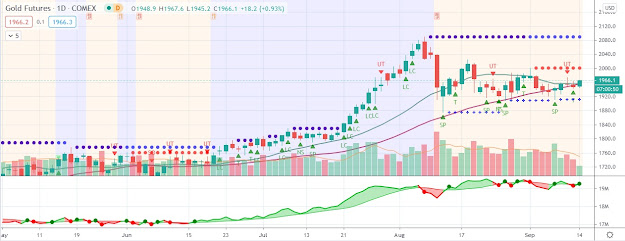Money doesn’t grow on trees; it will have to be borrowed or printed
The gold price held firm near $1,655 per ounce on Wednesday as the gold price continued to consolidate in morning trading. The price of gold, as well as the U.S. Dollar Index, oscillated between gains and losses in overnight trading. Silver moved modestly higher, by 0.3% to $32.30 per ounce.
In the latest edition of his Gold Monitor, Murenbeeld wrote that “The case for some gold bearishness is fairly compelling at the moment. Europe is in recession and with the prospect of no further LTRO, fiscal retrenchment and deflationary domestic pressures are front and center…China is slowing, and while no one can know exactly how rapidly, there is growing speculation that the slowdown is turning into a ‘harder’ landing than government officials have suggested… The US dollar is well bid, not least because there is renewed optimism over the US economy.”
However, despite the near-term bearish factors, Murenbeeld contended that the longer-term outlook for the price of gold remains quite favorable. “Our principle argument for QE3 actually rests with the likelihood of a financial/banking disaster in Europe (which for the moment has been postponed because of LTRO1 and 2),” he wrote, “and the Fed will then wish to insulate the US financial sector from the contagion.”
“With respect to Europe, it is highly doubtful monetary reflation is finished,” the Dundee economist added. “Where, for example, will the €500 billion for the ESM come from, or the billions remaining to be doled out under the EFSF in the likely event this program continues through 2013?…this money doesn’t grow on trees; it will have to be borrowed by some government and/or it will have to be printed by some central bank. In our view the financial problems of Europe will be revisited sooner rather than later.”
In the latest edition of his Gold Monitor, Murenbeeld wrote that “The case for some gold bearishness is fairly compelling at the moment. Europe is in recession and with the prospect of no further LTRO, fiscal retrenchment and deflationary domestic pressures are front and center…China is slowing, and while no one can know exactly how rapidly, there is growing speculation that the slowdown is turning into a ‘harder’ landing than government officials have suggested… The US dollar is well bid, not least because there is renewed optimism over the US economy.”
However, despite the near-term bearish factors, Murenbeeld contended that the longer-term outlook for the price of gold remains quite favorable. “Our principle argument for QE3 actually rests with the likelihood of a financial/banking disaster in Europe (which for the moment has been postponed because of LTRO1 and 2),” he wrote, “and the Fed will then wish to insulate the US financial sector from the contagion.”
“With respect to Europe, it is highly doubtful monetary reflation is finished,” the Dundee economist added. “Where, for example, will the €500 billion for the ESM come from, or the billions remaining to be doled out under the EFSF in the likely event this program continues through 2013?…this money doesn’t grow on trees; it will have to be borrowed by some government and/or it will have to be printed by some central bank. In our view the financial problems of Europe will be revisited sooner rather than later.”




Comments
Post a Comment